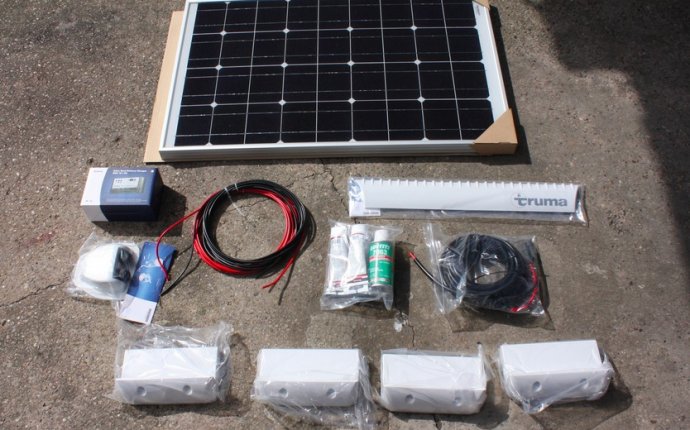
how to wire a solar panel system
The first question to ask yourself is are you capable of doing this work or should you get an electrician to do it? However it should be within the capabilities of most DIYers. Depending on where you live, there may be regulations controlling the wiring of solar panels.
Question number two - do you need to wire the panels in series or parallel?
If your panels are 24 volt and your controller and batteries are 24 volt, then you would need to wire your panels in parallel- you would be connection all the positive connections together and separately connect all the negatives together.
You can connect pairs of panels in series (sometimes referred to as a string), connecting the positive terminal of one panel to the negative of the next, to increase the voltage.
The effects of Partial Shading on overall efficiency should be taken into account when considering series wiring.
As you don't know how your system may develop in the future, it would be a good idea to buy your panels in even numbers, making it convenient to wire pairs in series if you want to change, say, from a 24 volt to a 48 volt system.
The next question to consider is the type of wire to use. We generally think of electricity flowing freely through an electric cable, however cables will have a resistance that will tend to restrict that flow to a small but possibly significant degree.
This resistance will be proportional to the length of the cable (the longer the cable the greater the resistance), and inversely proportional to the cross sectional area (a fatter cable has less resistance).
Below is a table showing approximate resistances per metre length for different sizes of copper wire. (Resistance is measured in ohms)
| Cable Cross
Sectional Area mm2 |
Approximate
Equivalent American Gauge |
Approx. Resistance
per M Length ohms |
|---|---|---|
| 1.5 | 16 | 0.012 |
| 2.5 | 14 | 0.007 |
| 10 | 0.003 |
So, how do we use this information?
Let's suppose the cables we connect to our solar panels are going to have a 1.5mm2 cross sectional area and are going to be 20m in total length (10m each for positive and negative cables).
The total resistance of our cable will be 20 x 0.012 = 0.24 ohms
Let's suppose that our solar panels are going to be pushing out 20 amps of current, then we can use ohms law to calculate the "voltage drop" along these cables.
ohms law can be stated as: V=IxR
Or, Voltage Drop = Current in amps x resistance in ohms
In our case above, the voltage drop is going to be 20 x 0.24 = 4.8 volts. This means that the voltage at the charge controller end of the cables will be 4.8 volts less than the voltage produced by the panels if a current of 20amps is flowing.
This voltage drop is irrespective of the voltage we are using, it is caused by the current and the resistance.
If our panels are wired for a 24 volt system we would be looking at a voltage drop of 20% which is clearly unacceptable. Various different figures may be quoted as a maximum acceptable voltage drop but 2% sounds like a good target.
In our example above, 6mm2 cable would still have caused a 5% voltage drop, so it would be worth considering larger cable still, or separate cables for each panel (each cable then carries a smaller current so there is a lower voltage drop, or mount the panels closer to the charge controller and batteries to reduce the cable length.
If you are still in the design stage of your system, you may consider using a higher voltage system.
Panels producing the same wattage as those in our example above (20 amps x 24 volts = 480 watts) but wired to give 48 volts, will only be producing half the current (still the same power of 480 watts).
With only half the current flowing, the voltage drop will be half, and better still, with double the voltage, the percentage voltage drop is halved again, ie, the same cable will result in 1/4 of the % voltage drop that you would get with a 24 volt system of the same power.
Earthing PV Panels
Depending on your location, it may be required that your panel frames are earthed, and it is certainly advisable.
Non earthed frames can acquire an induced electrical voltage (which may or may not be harmful) or could accidentally come into contact with a live conductor.
Making a good connection between a copper earthing wire and the aluminium frame of a pv panel is not straight forward due to natural oxidation of aluminium, and any manufacturers instructions should be followed.
In some cases, the DC circuit should also be earthed, as should the AC circuit, following manufacturers instructions.









